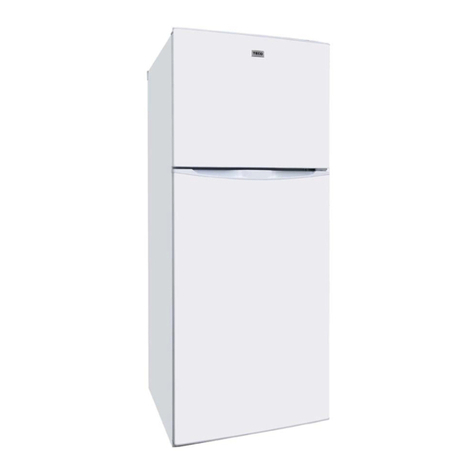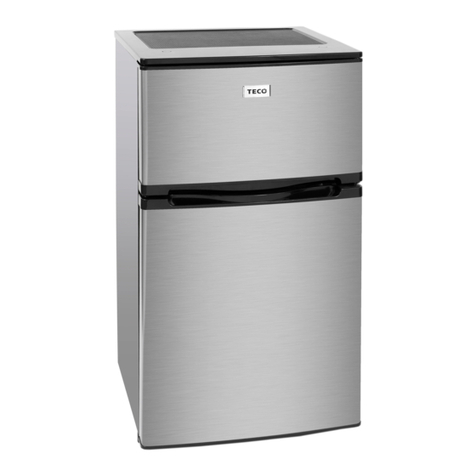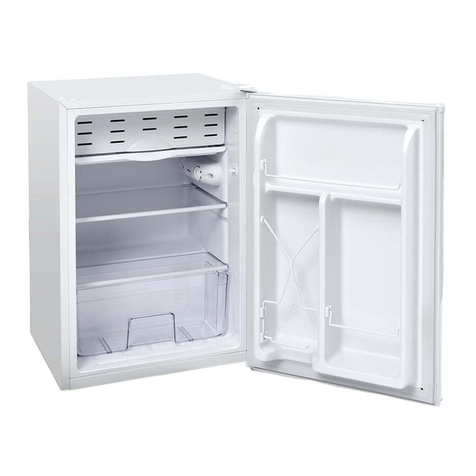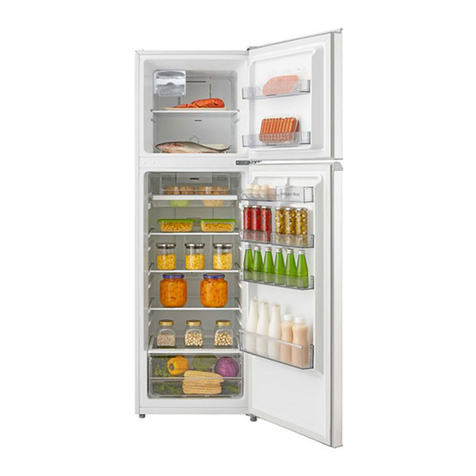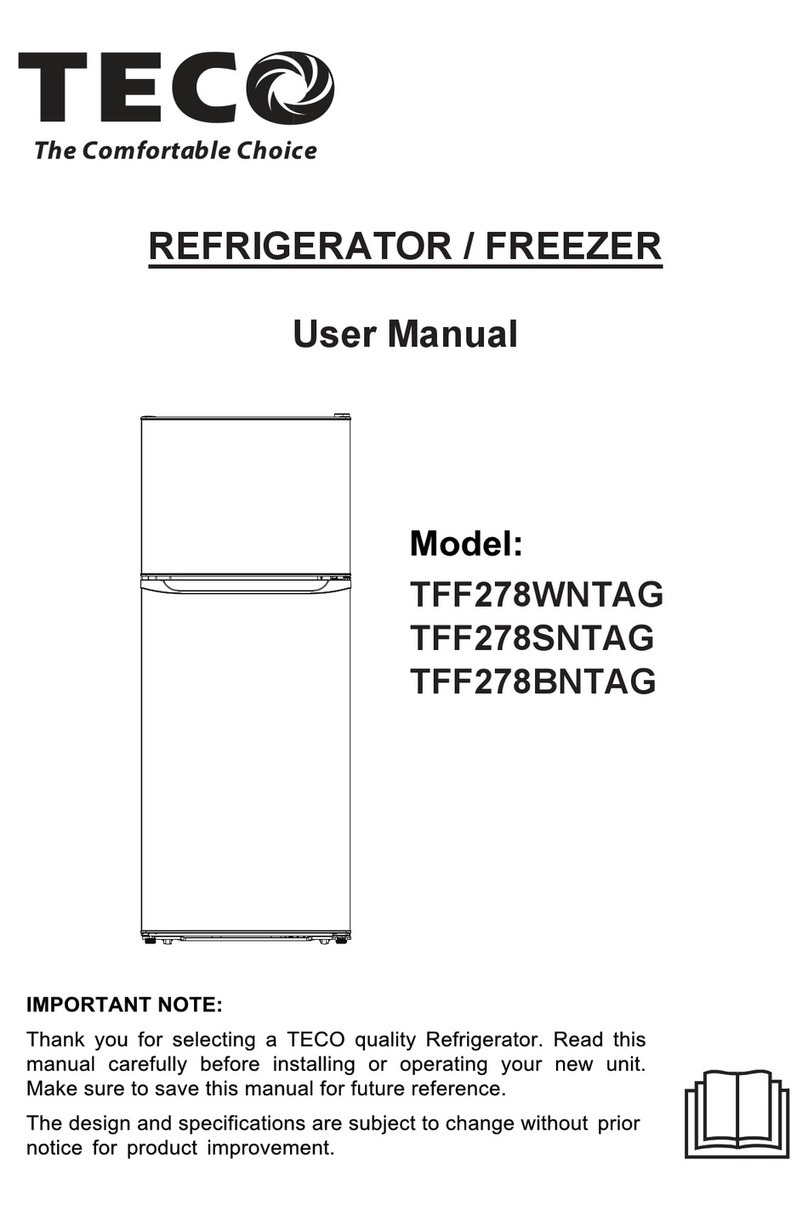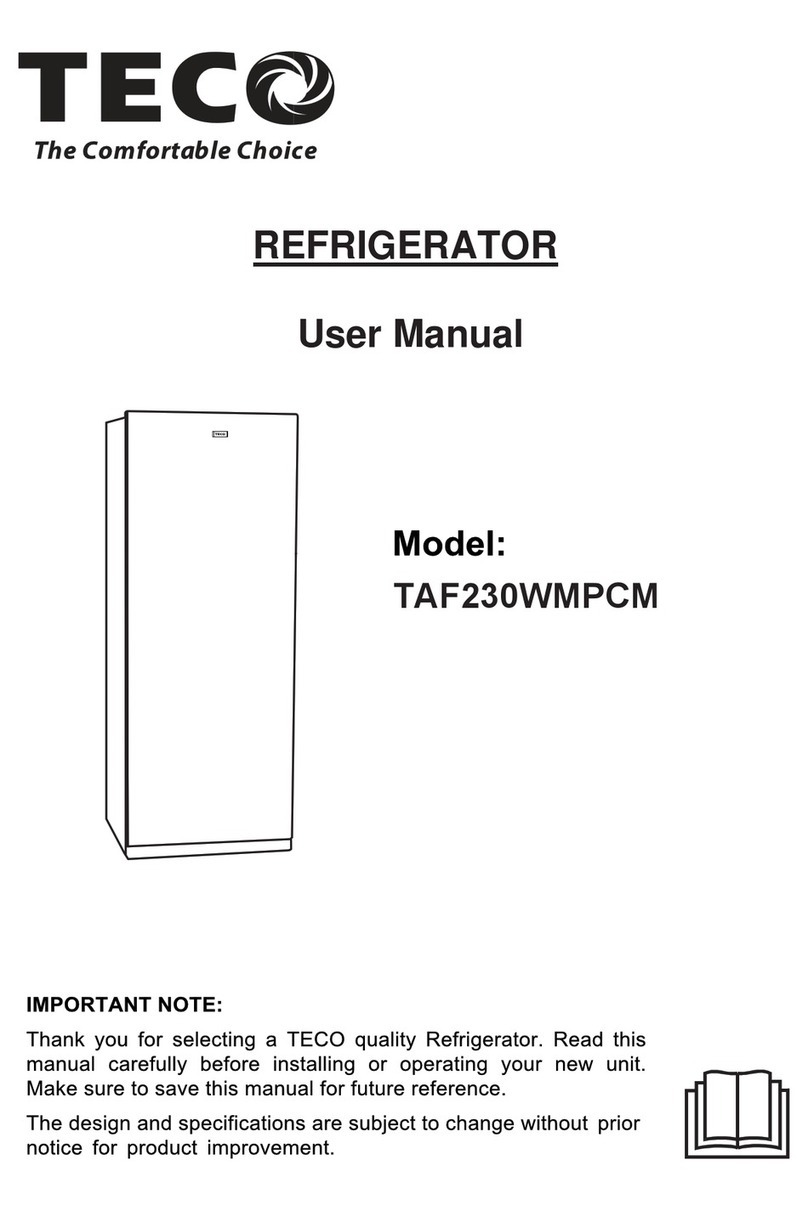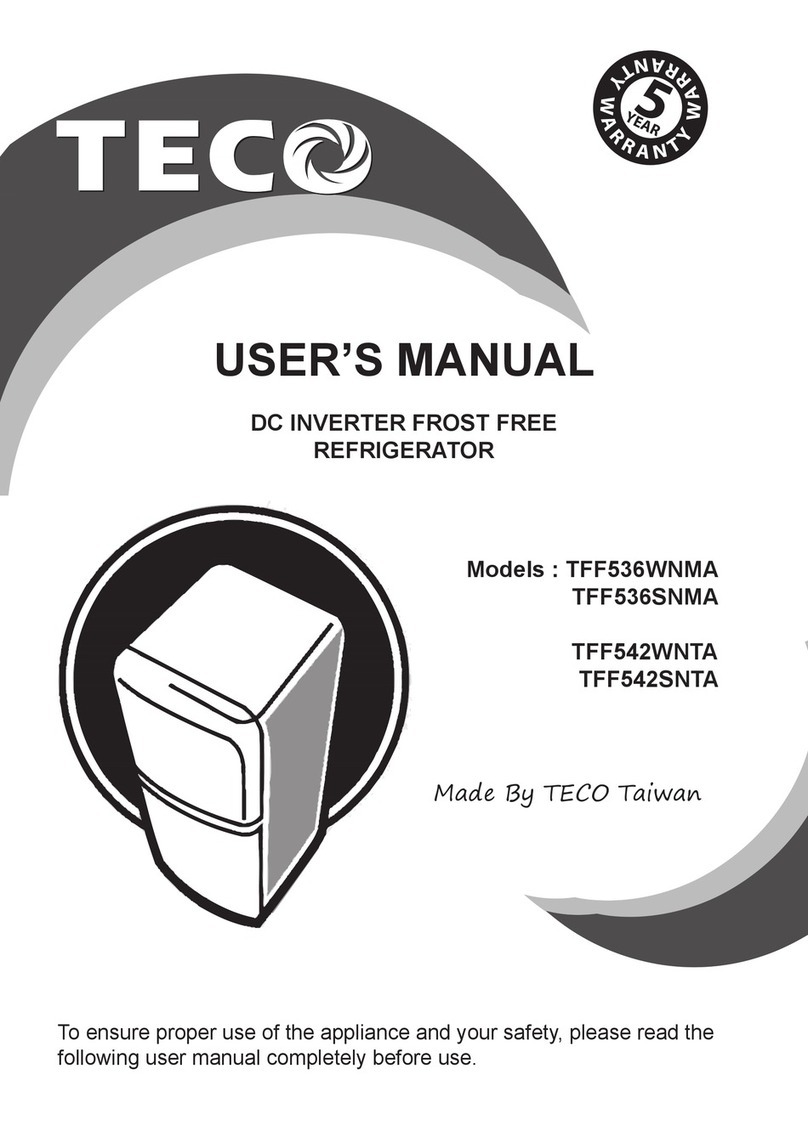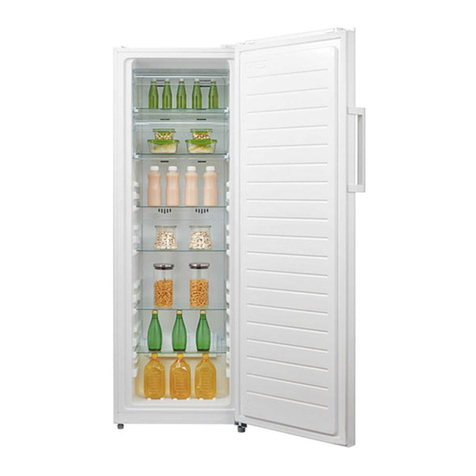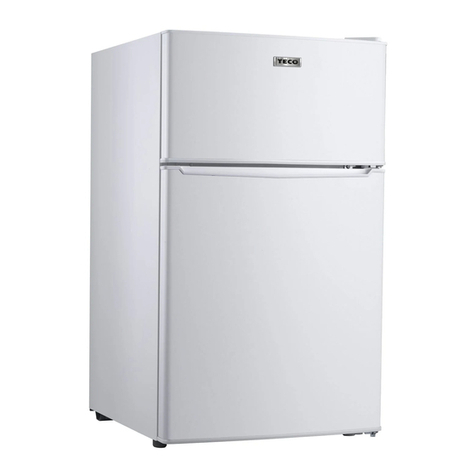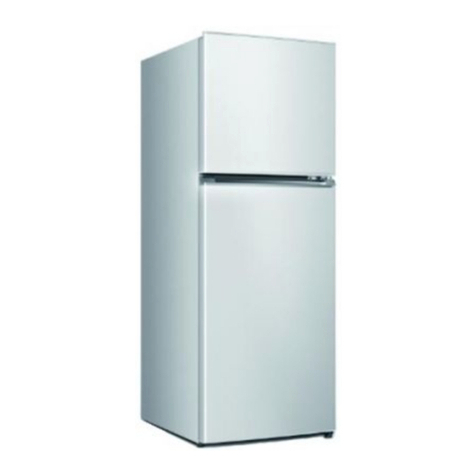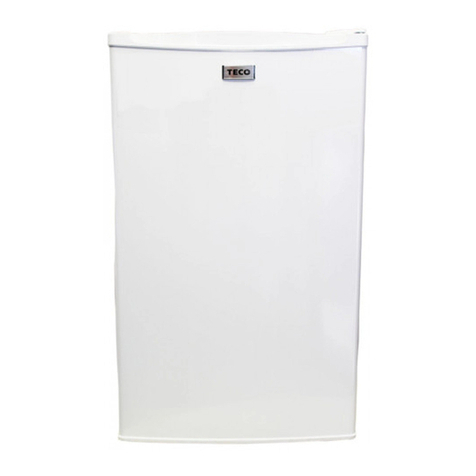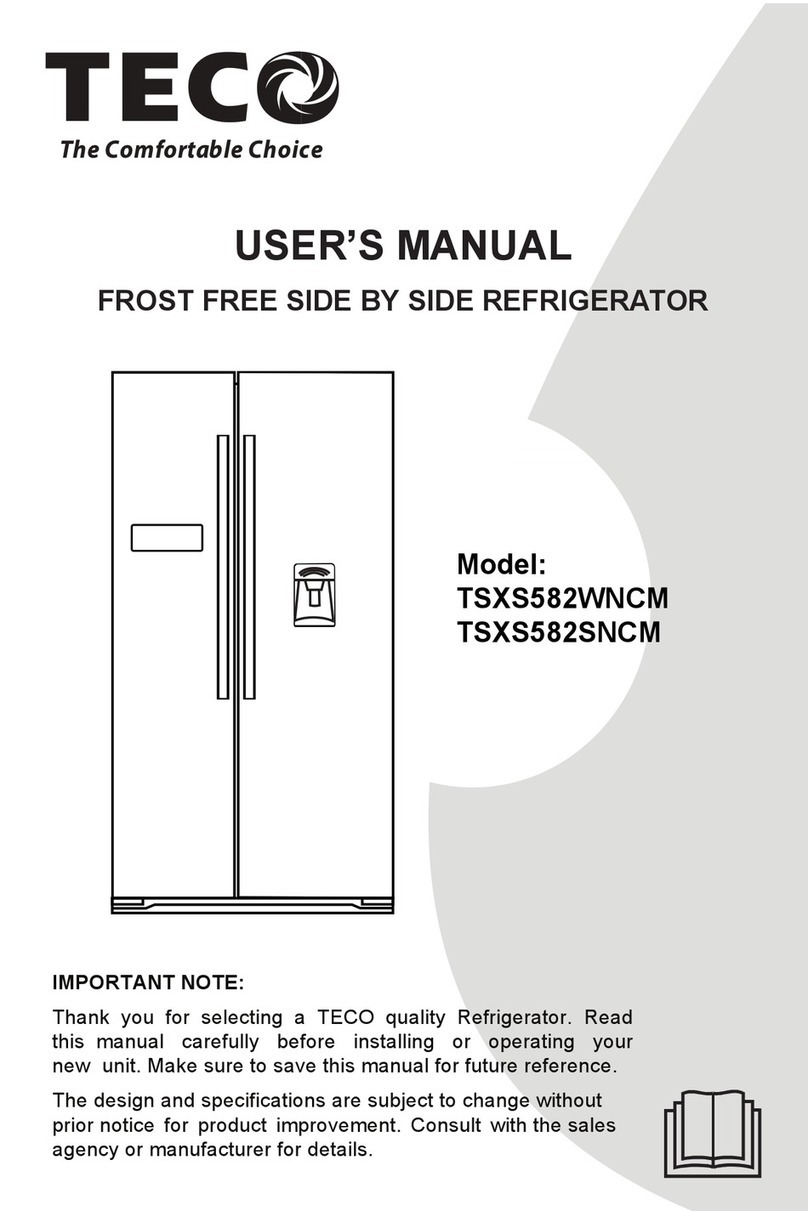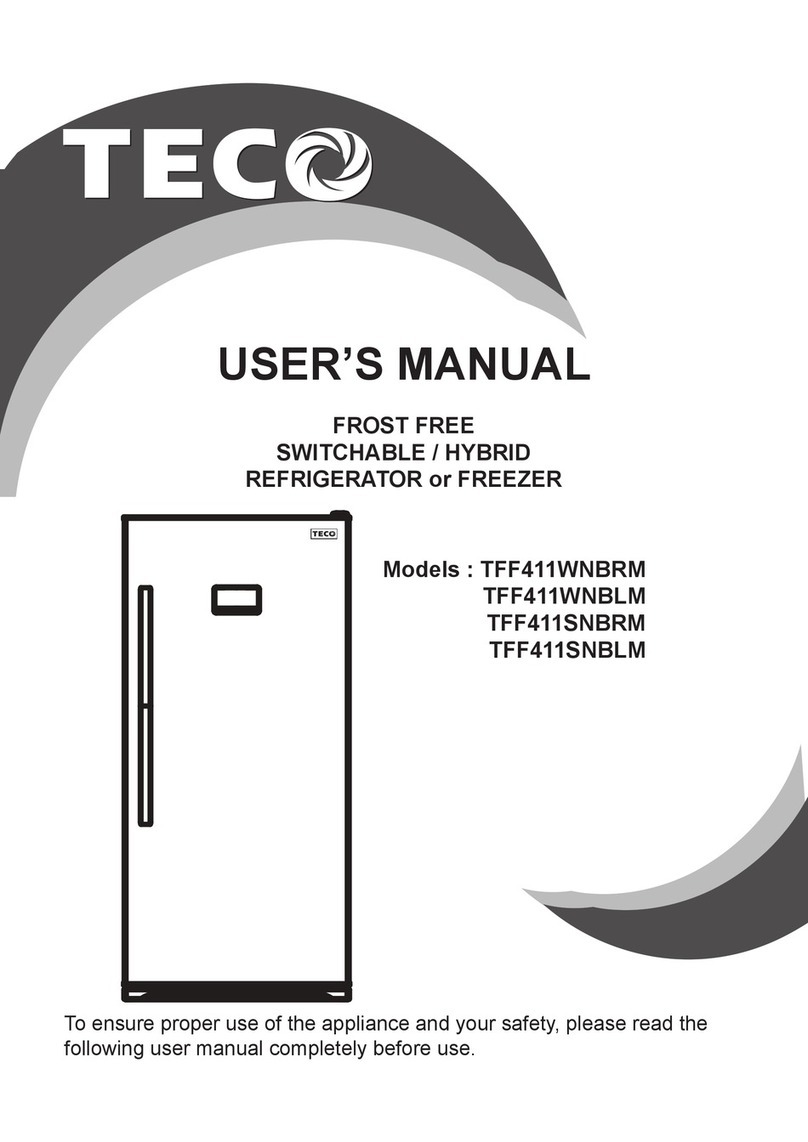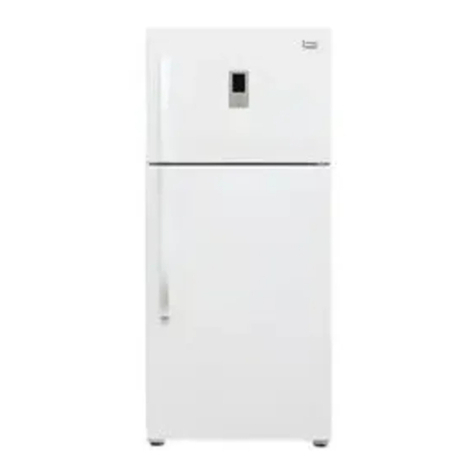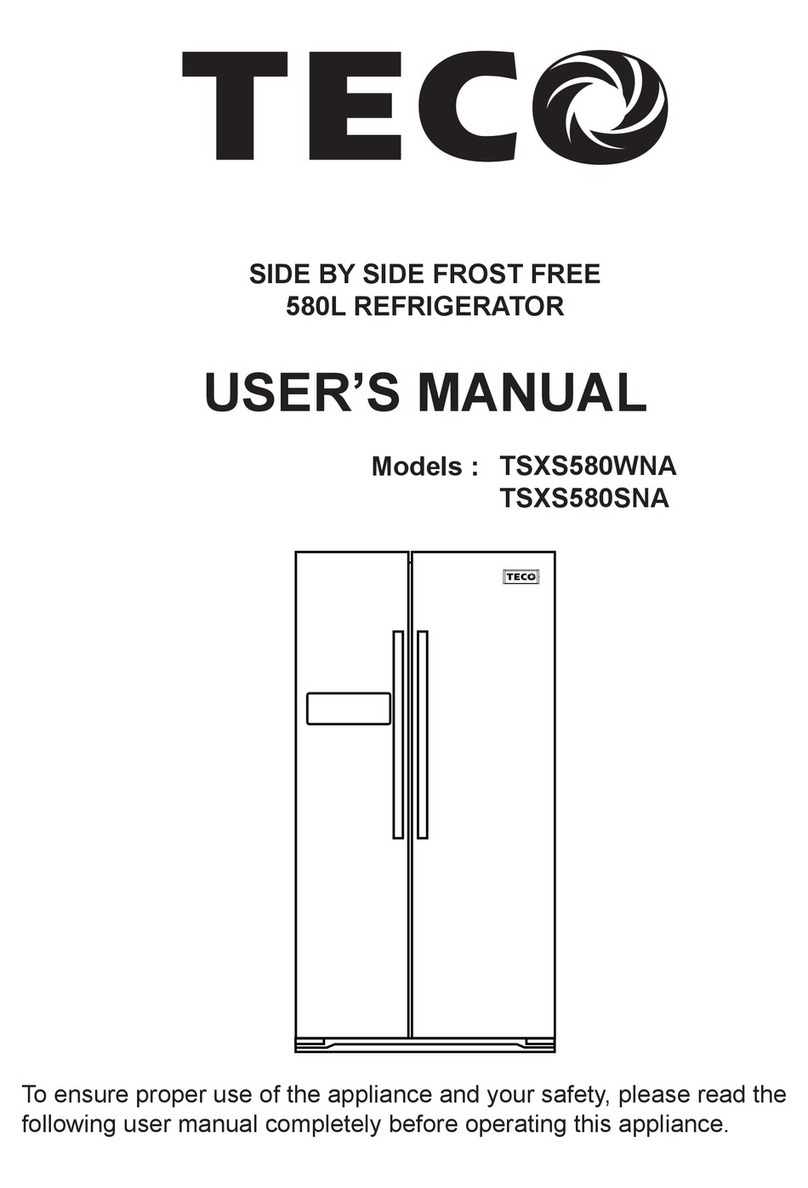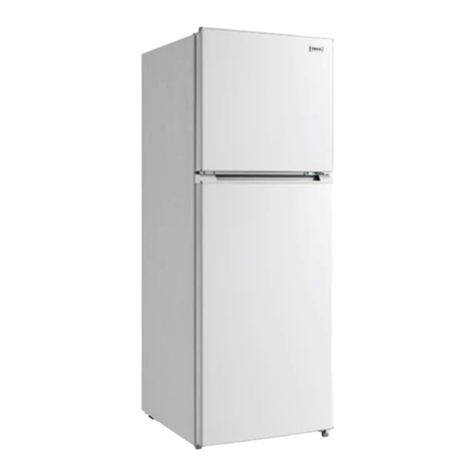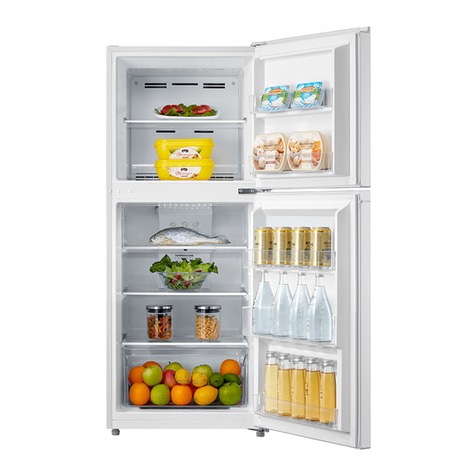
OPERATING INSTRUCTIONS
PLACEMENT OF FOOD
1. There should always be some space between
items inside for air circulation.
2. Food should be kept in sealed packaging to
avoid becoming dry or spoilt.
3. Hot food should be cooled down before placing
into the appliance. Otherwise, the interior
temperature and power consumption will increase.
4. Reduce opening the door frequently.
This will increase the appliance efficiently and reduce
power consumption.
Do not use any electronic equipment inside the appliance.
Refrigerator temperature:
The temperature of the refrigerator can
be controlled manually by adjusting the
thermostat dial. Turning the refrigerator
dial (page 3 item 4) to the right
(clockwise) will lower the interior
temperature. Turn the dial to the left
(counter clockwise) if a warmer interior
temperature is required.
Freezer temperature: To adjust the
temperature of the freezer, turn the
thermostat dial (page 3 item 3) to the
right (clockwise) for maximum (colder)
or to the left (counter clockwise) for
minimum (warmer) temperature).
Please refer to the table above for thermostat settings for normal, quick
freeze and quick cooling.
Quick Freeze : Use this setting to rapidly cool the freezer section.
Quick Cooling : Use this setting to rapidly cool the refrigerator section.
For normal operation, it is recommended to keep both dials in the
central position (as indicated “Normal” above).
WARNING: The temperature of the refrigerator section
can drop below 0oC if set to maximum “COOLER” for an
extended period of time (refer to Fig.1 above).
WARNING
TEMPERATURE SETTING RECOMMENDATION
Normal
Freezer
compartment Refrigerator
compartment
Fast freeze
Fast cooling
COLD COLDER
COLD COLDER
COOL COOLER
COOL COOLER
COOL COOLER
COOL COOLER
COLD COLDER
6
SETTING THE TEMPERATURE
Fig. 1
WARNING
